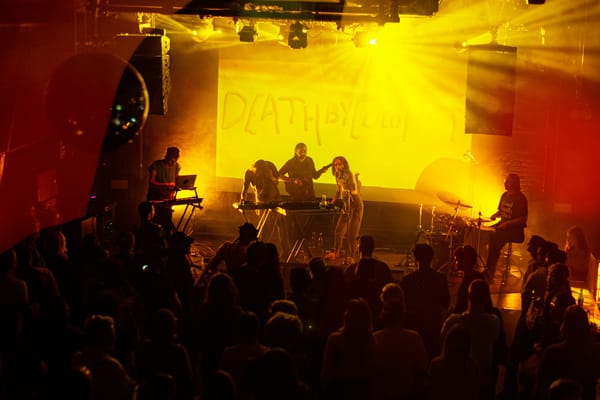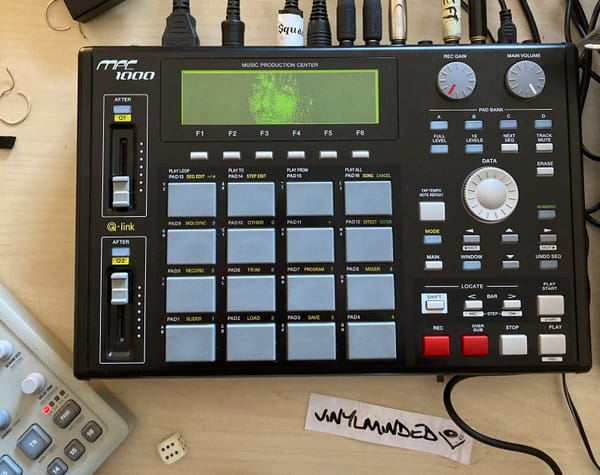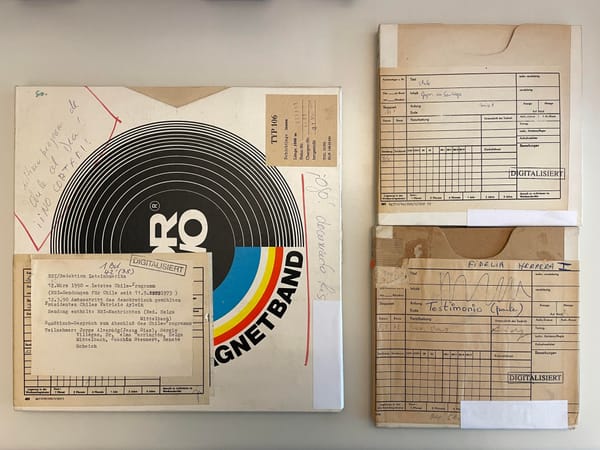Register for free to receive our newsletter, and upgrade if you want to support our work.
This article written by Krisztián Puskár was first published in Slovakian translation by the monthly Kapitál in June 2019. Then the original Hungarian text was republished digitally by the Élő-halott zine. This is the third publication, the English translation was made by Gábor Gyulai for MMN.
1.
In April, a rather bizarre incident happened. The Metropolitan Municipality of Budapest suspended all kinds of events in market halls that fell under their authority organized by non-governmental groups, until the end of the EP and autumn municipal elections. The reason for this decision was to discourage people from discussing politics in these spaces. Which are, again, market halls. In fact, they wanted to eradicate the operation of one certain NGO: Mindspace, based in the 8th district of Budapest, which was organizing plant-swapping and community brunch events in the market hall of Rákóczi tér. The organization created these series of events (among other non-governmental activites) in order to enhance social and cultural life of the district amid its gentrification. The organization is not really pro-government but it’s not explicitly anti either: they work in cooperation with the Municipality of the 8th district, which is run by the government.
You can call this a ridiculous intermezzo in the life of the capital – after all, how is it possible to ban people from talking about anything they want to talk about at the market? Yet, it is actually so depressing to see this when, at the same time, a hybrid regime is emerging, which bears a two-third majority in the parliament and legislation, with the support of only one-third of the Hungarian population. Besides, it is based on corruption, feeds oligarchy and openly disapproves the work of independent press. Regarding this latter, the government dismantles its existence both on an ideological and financial level, while they build up their own media conglomerate run by propagandists, using billions of Hungaran Forints. Let’s just not talk about their current relation to the EU, or how they run campaigns by demonizing “migrants”, while the Hungarian society has barely seen any. Yeah, I will talk about music soon.
A few weeks before the municipal decree, I was attending an apartment concert, just in front of the market hall of Rákóczi tér. It was called Noise n’ Roses, which is a new series of early-evening musical events, organized by Rozi Mákó and Lucia Udvardyova, and driven by the enthusiasm of the local experimental electronics scene. These invite-only home concerts can bear only a limited amount of people, they happen at different places every time, and one can only hear about them through the grapevine. Also, there is always a live stream on Facebook for these ca. 3-hour-long sessions, which all end by 10PM, at least for the music part. On this April night, one could listen to Judit Konopás’ meditating ambient, Triglav’s “color-music” crafted with his modular synthesizer and the performance of Xpldnglke & Taeateh, which I have missed unfortunately since I had to grab some stuff for friends from the 24/7 shop nearby.
It is symbolic that from the window of the apartment concert, one could see just that market hall mentioned above. Surely, there is a rhetorical temptation to connect the two, however there is no direct connection between them. Despite this fact, these two phenomena represent quite well the contradictions and public climate of a city, which is full of vibrant and innovative, alternative cultures, connecting to the international network of its scenes.
The underground, or you could say, counter-cultural scenes are under pressure. Not only for political reasons, but also because of Budapest’s urban planning. The latest reactionary change of the regime affects the city’s nightlife as well; culture becomes an existential issue and at the same time, a political one too. Nevertheless, all this pressure nurtures innovation and works of art, both in shrinking spaces and underground.
I would skip the enumeration of Budapest’s various undergrounds, I do not wish to introduce every exciting or cool stuff. Surely, you can find techno and rave here, loads of DJs, pop music etc. I would rather emphasize a few things only, similarly to a light of a strobe, and let the phenomena and issues take their own shape. The activities of UH Fest and Küss Mich will be left out here as well, since I am both co-curating and organizing them – while at the same time, as I am involved too, I can certainly experience the above mentioned issues to my cost.
2.
One of the most exciting scenes in Budapest has its roots in punk culture, while it is not limited to genre conventions. The scene that emerged from the basement of Auróra, the co-operative of Gólya, plus the Dürer complex and the former rehearsal room of Keleti blokk brings forth mutating and flourishing punk, which also connects to the latest generation of electronic music scene in Budapest.
Bands like Norms, Padkarosda, Észlelés, Berosszulás, Piss Crystals, Sote, Karak, Vörgar and many other ephemeral, disappearing or resurrecting groups under different names (let me skip to recount them all) – they are not only a self-organizing community, but by their works and actions the above mentioned venues become parts of the Hungarian, European and international networks. Bands on tour are playing in these clubs on a daily basis, reinforcing the scene and pumping new blood into it. At the same time, better and better local bands are born, creating their own sound, musical aspect and character, which is not unrelated to the fact that they are autonomous, following rather a critical way of thinking (both in a musical and political sense) than well known genre conventions. The Pénz collective is also heavily attached to this extreme-punk / noise rock / post-punk scene, bringing this kind of attitude and DIY mentality to electronics and rave.
The evolution of the Exiles label and its affiliates in the past two years is also something quite notable. Exiles started as a seemingly outsider techno event series, very much inspired by the freetekno attitude of Davoria and the experimental electronics of Hungary around the turn of the millenium. The Exiles label blended several cult figures and talented newcomers, mutating its way rather steadily from techno to electronics. Exiles is turning into a brand, following an umbrella management: its most exciting artists show their significance beyond the label, not taking the limits of techno too seriously – I’m thinking of artists such as Juhász Tamás, Anna Makay (MA’AM) or Máté Janky (Alley Catss). Janky also has his own label: Daddypower releases the weirdness and deconstructed oddities of the post-internet digital era, however its latest release takes its turn back to an old figure, TH Anatol.
It’s interesting to point out that the two shows of Janky and Makay I found to be the most fascinating during the first months of the year are related to the improv scene of Budapest, notably to drummer Áron Porteleki. In the beginning of the year, Makay performed with him as a duo: that night one could witness a beautiful hybrid of sound poetry, electronics and improvisational drum playing (since then they continued working together as a trio). As for Janky, he played the first time in his life in an imporvisational trio setup with Porteleki and Ákos Szelevényi in Café Lumen, which is actually the central key spot for the Jazzaj ‘free music’ events and the organizing and archiving works of Dávid Tamás Papp (PrePost Records).
The music of Gábor Kovács aka Új Bála acts both as one of the heroes of the local scene, and connects naturally to the (Central) European scene, taking its own course for sound and genre. His self-reliant polyrhythmic proto-techno, rhythmic noise, sound collage and both witty and grave dance music makes him probably the most peculiar figure in the Budapest techno scene. He plays quite rarely in the dedicated clubs of this kind, presumably because of his playful radicalism. His albums and tapes are released by small international labels, such as the Czech Baba Vanga, but he is also well-connected to the French-Belgian electronic underground – he also plays around there quite often. Lately he started a dub-oriented project called Dutch Courage with Vienna-based Superskin.
Talking about the frequently performing, internationally acclaimed artists of the Hungarian experimental scene, one should definitely mention Gábor Lázár and Gosheven as well. Starting his journey from algorithmic experiments, on his latest LP Lázár established his sound in the form of meta-dance music. As for Gosheven, he is looking for music beyond (or before) music, driven by the crisis of contemporary music tropes with the means of alternative tuning. Apart from this, of course, there is still a strong influence coming from the Farbwechsel label and its co-founder, Martin Mikolai aka S Olbricht – there’s literally not a single article about Budapest’s underground from the past five years not mentioning them. However, regarding this field, recently the Dalmata Daniel label presented itself in a more determined way, strongly connecting to the Dutch electronic dance music scene and local (or semi-local) artists such as J. Mono, Imre Kiss or Norwell – and of course, to the techno club Lärm.
3.
Lärm, with its contradictory position, is in fact a textbook case in many aspects. Not only from a musical perspective, but also from an urban planning one.
The techno club modelled on Berlin venues (and also branded as such) was a turning point a few years ago in the nightlife of Budapest. Ever since its start, it has been focusing primarily on bringing major DJs and producers based on Berlin trends, hosting like-minded local residents and party series, sometimes even more adventurous acts. The club is operating for five years now, it can be found on the first floor of a building and as the years passed by it has been covered by six other clubs, creating a massive party-centered establishment, focusing mainly on tourists. As it turned out, Lärm is located in the middle of the ’party district’, in the heart of the capital, its street is full of bachelor partygoers and bawling tourists who find it comfortably cheap to party in Budapest. And as one might expect, there has been a legal and illegal industry developed to meet their needs – so locals barely set their feet in anymore.
To put it simply: the local government has created a ghetto to party at, which became on the one hand helpless, and on the other hand it leaves no space for interesting, cutting edge, forward-thinking music – and I’m not even thinking about experimental music now. As it seems, the primarily DJ-optimized Lärm serves here as an exception in this regard, yet it finds itself more and more in a rather hard pressed situation. The promoters who started the club, carry out many of their ideas mostly on Kolorádó Festival, organized outside of Budapest.
Anyway, back to the urban space: those creative people and communities, who are forced to move from the district, are facing the ousting attacks of the reactionary urban-restructuring politics of the government, which serves the burst of tourism and the real estate bubble, in addition it prepares for the municipal elections. Not only the days of the concert venue Dürer kert are numbered (which hosts several scenes from metal to electronic music with four rooms), but also and mostly many of the small clubs and communities are under attack in the gentrifying 8th district, which emerged in recent years to create several of the most exciting cultural events and series in the city.
Auróra is a frequent target for political attacks, its operation is threatened by legislative prohibition; the improv music bar Kék Ló was closed; and around Gólya several office buildings and a Nokia center were built up, its small building of urban historical significance will be demolished. Similarly, techno oriented Corvin club had to close its doors, as well as the community-based coworking space in the same building, Müszi. And these are just a few examples. But sure, given this context it is probably not so ridiculous anymore to ban discussions of politics in the market halls. Even if it is necessarily, given its evolutional and civilizational reasons, impossible.
The musical and creative underground of Budapest is flourishing and getting stronger, even under constant pressure – self-expression and self-organization became a form of survival in the city. And inevitably, it’s also something that feeds one’s political identity, while at the same time, everyone can feel that these times are a rather difficult period of transition in the life of the city. The upturn of the last five or ten years in alternative culture is facing its limits, yet the new infrastructure has not been developed. Given this perspective, it will be of great importance to see the further life of Gólya, which started to build its own place even farther from downtown, based on its communal, co-operative resources.







